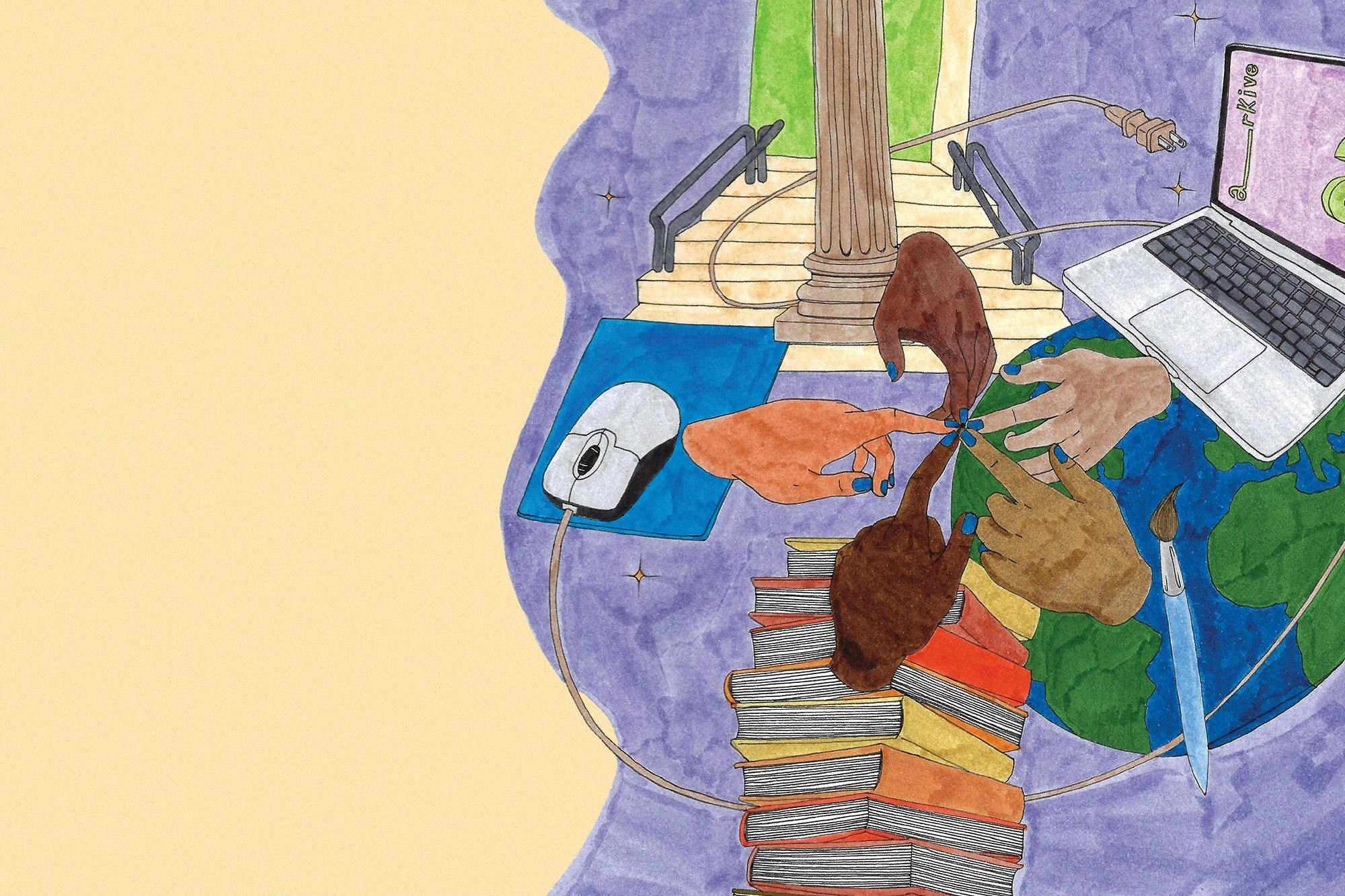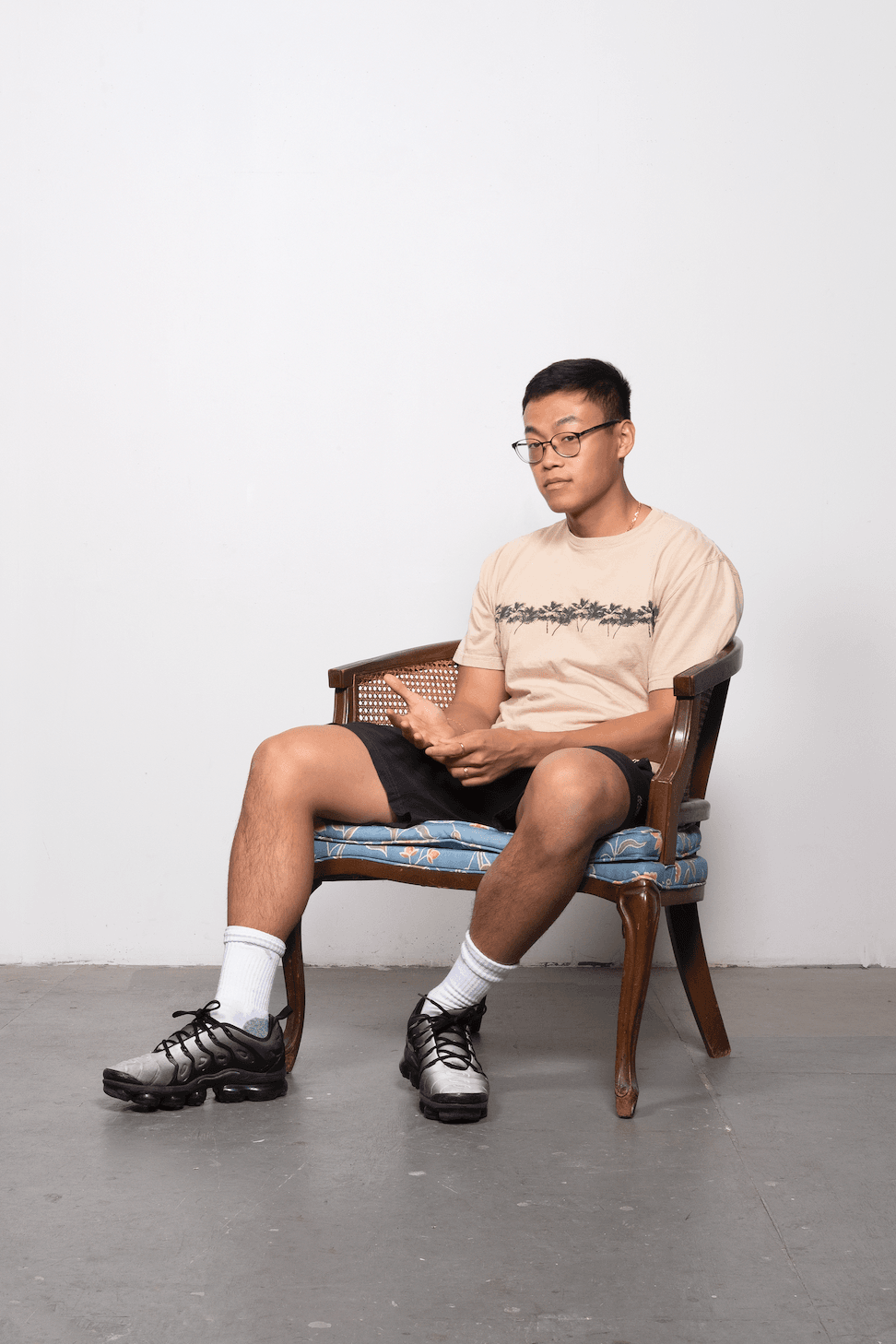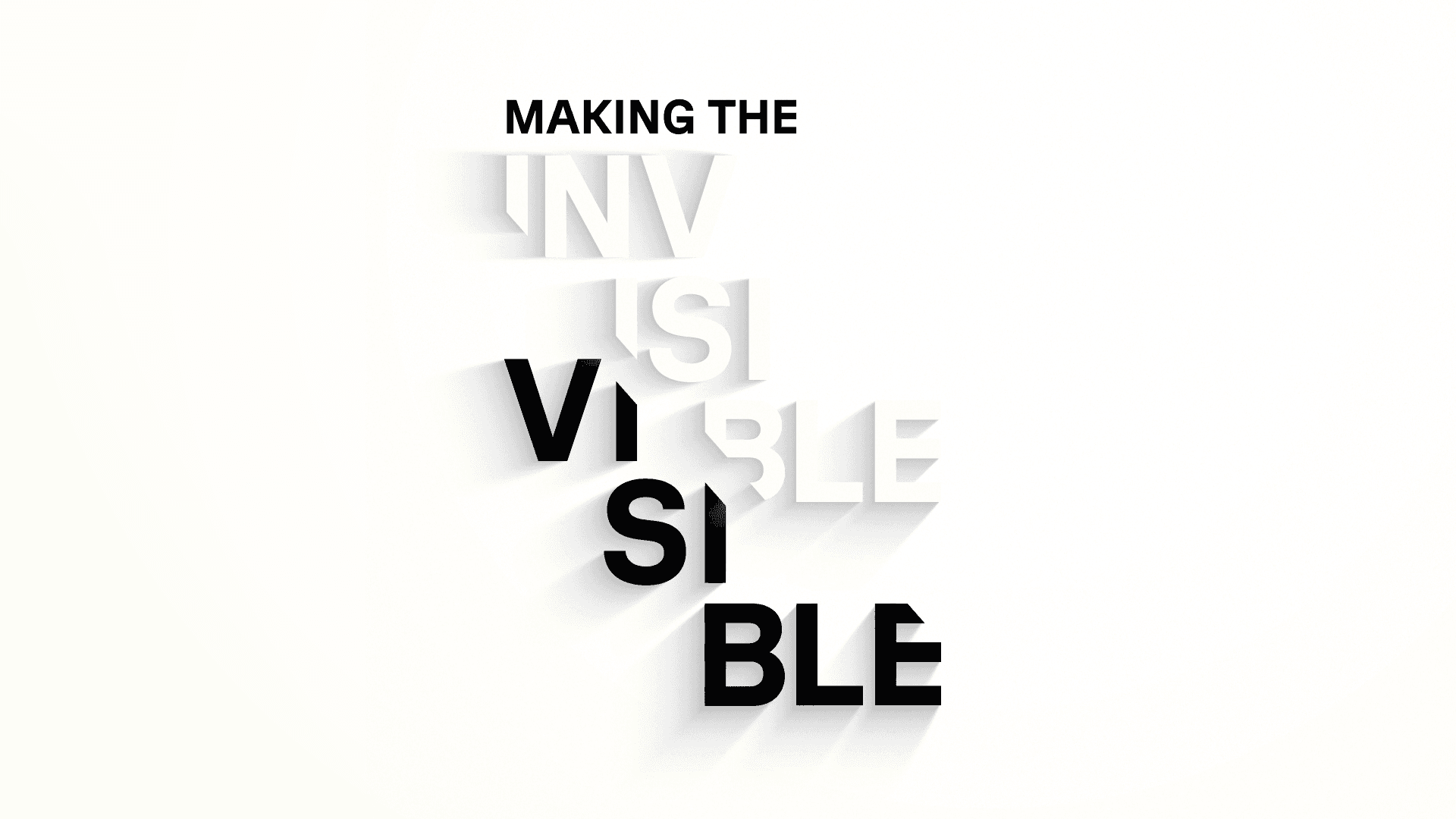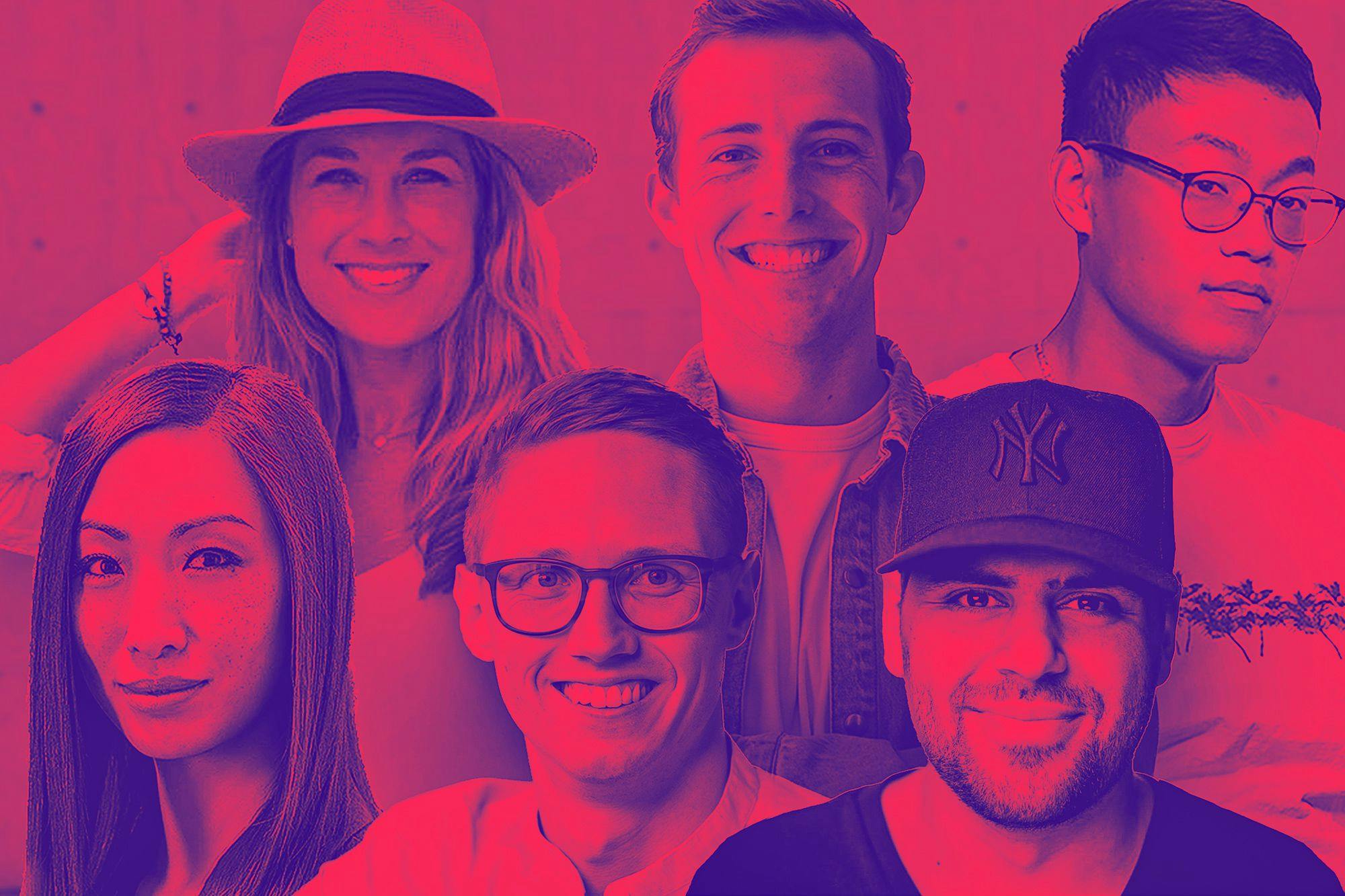On Museums


For most people, the word “museum” might bring a specific image to mind: marble white columns, Greek statues, temple-like architectures. Or, if we’re thinking more contemporary, one might imagine glass cubes and concrete walls and metal beams. Museums tend to showcase the most grandiose and cutting-edge architectural styles of their era, be that ancient or modern, but the feeling they project—of some kind of cultural fortress—has a long hangover into today.
This temple-like image is, of course, very purposeful. In western Europe from the 18th century onwards, museums showcased a nation’s most valued objects, but they were also the place to store the art of conquered nations and people. Many famous museum collections—The British Museum and the Louvre, for example—are built from war chests. Through exhibitions, museums could tell the victor’s story of colonialism, imperialism, and conquest. They could delineate what constituted civilization and what did not. Additionally, in the past 100 years, the role of many museums transitioned from an archive of civilization and culture to showcasing “fine art,” the category of which it helped construct. If the 20th century redefined what “art” was and who it was for, even as a proxy for expressing cultural values, the museum was the place for it. High art would promote high values, and thus produce model national citizens.
Today, museums are reassessing their relationship with this legacy in the midst of society-wide changes driven by a global pandemic, the BLM movement, and impending climate doom. Some claim that museums—as symbols of colonial and imperial power—should not exist anymore. Even non-collecting and contemporary institutions, which do not typically amass antiquities, are grappling with an existential questioning of the very idea of the museum. “Today the museum itself stands as a purveyor of systemic and symbolic violence,” critic Alex Kitnick wrote in Artforum in February 2021. These claims may be radical, but they point to a climate that is scrutinizing the foundations of the idea of a museum.
Recent protests have questioned this foundation in a variety of ways. The grievances against museums can be grouped into three interconnected veins: 1) toxic philanthropy 2) exploitative labor practices and 3) a demand for representation/reparations.
Toxic philanthropy describes the process of “cleansing” money made in unsavory ways through philanthropic activity. The 2019 protests at the Whitney Museum of American Art asked Warren B. Kanders, a board member of the museum, to step down in condemnation of several companies that he owns, in particular one called Safariland—which produced the teargas used at Ferguson, the US/Mexico border, and other sites of state-mandated violence. Protestors accused Kanders of “artwashing,” in other words, using art to “launder” money made through human rights abuses. Protests surrounding the Sackler family that took place at the Louvre, the Met, the Guggenheim, and other institutions similarly denounced buildings funded by money made from the sale of OxyContin, an addictive opioid that has caused a deadly epidemic across America. Many current and former trustees—including David H. Koch at the Metropolitan Museum of Art, a radical right-wing mega donor, or Steven Mnuchin at LA MOCA, who served as Donald Trump’s campaign finance chair—contribute extensively to campaign finances that contradict the museums’ stated progressive values (the artist Andrea Fraser details this exhaustively in her book 2016: In Museums, Money, and Politics).
The second point is on labor. Most museums have historically paid poorly and offered little upward mobility and benefits. This makes it difficult to work at one without external support or generational wealth, effectively a form of gatekeeping. Only recently has this been understood as a problem of diversity and inclusion. The movements at both the Whitney Museum Union and the New Museum Union embody this unrest, as well as the efforts towards designing a future with more equitable labor practices within the museums.
Nested within this problem is an implicit question of who speaks for whom—the third point. Most curatorial boards are primarily white. Even as diversity initiatives expand, boards will remain a predominantly white space, although that is changing. The Dana Schutz controversy, during which two Asian American curators allowed a white woman painter to depict an image of Emmett Till, the 14-year-old Black boy brutally tortured and lynched in 1955, also called into question exactly which audiences a museum seeks to serve. And after questions of representation, there are those of cultural reparations—how do these institutions atone for hundreds of years of exclusion and theft?
We might say that this unnecessarily politicizes museums. That it’s liberal hand-wringing that distracts us from real issues, like getting rid of jails or defunding the police. Museums in the US also receive so little public funding to begin with, and they are trying their best. After all, hospital boards often hold similar contradictions, as do universities and research labs, with board members profiting from the same situations that the institution is forced to ameliorate. You might also say that it doesn’t matter where the money comes from, it matters what you do with it, seeing as all money is, to some extent, dirty.
But these contradictions—between the progressive values a contemporary museum may espouse and the ones that its trustees’ holdings might suggest—could be a starting point from which we imagine new futures. These conflicts can be summarized by the following quote from artist Michael Rakowitz: “I look forward to collectively imagining an ecosystem that does not enlist our content to go on display in institutions whose board members create the very conditions in the world that many of us are devoted to dismantling.” Ultimately, the contradictions within museums are a symptom of larger societal inequities, not the cause, and these are contradictions to get comfortable with. Maybe you’d have to solve capitalism to solve museums. But when the problem is insurmountable, I think the response is to do more, rather than less. As Hannah Black wrote for Artforum in 2019: “...if we believe that our capacity to act against this evil is limited, we should take every opportunity given to us to act.”
I believe that museums are worth saving. Museums are dedicated to the understanding and contextualization of art within history for the public, with people who have spent their lives doing just that. Museums can show and commission new work, more or less unfettered by commercialism. Museums also present an unparalleled quality of attention and care for the art. Not all art spaces are the same, nor do they ask for the same type of attention from a visitor. Few places offer a (relatively) undistracted experience of art anymore.
Furthermore, the art museum is one of the last places you can go where commercial or speculative interests are minimized over scholarly or humanitarian interests. Cultural significance is the number one priority in acquisition, and museums work hard to mitigate conflicts of interest—to reduce and eliminate any entries into the collection that are motivated by financial speculation.
A long-standing critique of museums is on the incursion of commercial motivations into institutional ones. Preserving the museum’s illusion of autonomy is important because there are fewer and fewer places like it. If the museum is to be a neutral arbiter of culture, financial speculation will overwhelm the criteria by which “culture” is deemed to be significant. The privatization of once-public collections has been increasing slowly over the last thirty years. In art historian Claire Bishop’s 2013 book Radical Museology, she details this move across the world. In Europe, museums are increasingly dependent on corporate sponsorship as governments withdraw public culture funding in the name of “austerity.” In the US, this has been the case since the culture wars of the ‘80s and is now accelerating. Bishop provides an example: An art dealer named Jeffrey Deitch was appointed head of LA MOCA in January 2010. Two months later, the New Museum controversially installed the collection of its multimillionaire trustee Dakis Joannou and employed the artist Jeff Koons—already in Joannou’s collection—to guest curate the exhibition. This conflict of interest blurs the aim of the museum—originally intended to be a somewhat neutral arbiter of cultural significance, it now more closely resembles a garage sale for a rich collector.
What would an institution look like that could fill the contours outlined by these criticisms?
There is an opportunity for a museum that no longer just signifies differently but also changes structurally, reflecting the external politics of the museum into its internal processes. It is the natural conclusion to the demands of recent protests to develop a more hard-edged politics, focusing on hiring practices and board structures—a politics that is often less glamorous than an exhibition or a program. Many places, like the Institute of Contemporary Art San Francisco, or the mutual aid organization Public Assistants in Crown Heights, Brooklyn, or Tania Bruguera’s Immigrant Movement International, are doing this already. In addition, many curators and artworkers from existing institutions have been working concertedly to enact change from within.
Yet there is also an opportunity to create a new institution from these criticisms. It could be unabashedly political and address histories of colonialism, genocide, and slavery that other museums are built upon. It could rethink what “acquisition” means by supporting artists’ communities in a long-term way. It could take care of artists, too, by investing in their communities with residencies, resources, and support. It could be geographically decentralized, working within a network of existing institutions—not to be placeless, but to restore a critical engagement with context.
Recent experiments in Web3 social organization exhibit glimmers of something new. They might also replicate existing dynamics, but it’s worth a try. A DAO, or Decentralized Autonomous Organization, is a member-led community without a central authority. While the social format has existed for thousands of years within human civilization, the last few years have seen a fluorescence of DAOs made possible through the decentralized technologies of blockchain; smart contracts allow for decisions to be executed without a central authority, on a transparent ledger accessible to anyone within the group. Decisions within a DAO are typically made collectively rather than hierarchically.
One way of rethinking the museum is to imagine a DAO that could replace the functions of a board with that of a membership. Not all art is political, but its selection certainly always is. This membership would vote on the acquisition processes, in collaboration with curators and in public discussion. Implementing an emergent voting system into a collection strategy (quadratic voting, ranked choice voting) could change what that public would look like, incorporating more and new voices into museum decision processes at the highest level.
While the barrier to join a DAO is significantly less than to join a museum board, varying between $0 to $10,000, it is imperative that these new boards be as class diverse as possible. According to a New York Times article, it requires upwards of $15 million dollars in contributions to join MoMA’s board. The idea that, with a DAO, I could ask my brother to be part of a museum, to be on the board of the museum, while that’s not even a fathomable question somewhere like the Met, is unprecedented. Perhaps not just anyone should be on the board of a museum. But what would it mean if being a multi-millionaire was no longer the primary requisite? Of course, many museums have artists or actors or other creatives on boards, but they are still a minority. What would it mean to collectively decide the future of a museum, together?
A decentralized model could encourage museums to work more collaboratively and to create a network with smaller museums across the world. Out of approximately 200,000 works, MoMA shows only 83,000 online, and an even smaller number in person. That might prompt you to say “share!” and this does happen—museums process many loans—but the sharing process is so bureaucratically overburdened that it’s unlikely to expand much beyond a small fraction. Perhaps, with a decentralized model, artworks acquired won’t ever have to be in storage, but can be placed in museums around the world. This could also help to de-center the art world from North America and Europe, and get away from the idea that the big, rich institutions keep all of the good stuff.
A decentralized model means a certain relinquishing of expertise and power—not with abandon, but with trust and care, working between the academy, artists, and communities. There will be contradictions and odd acquisitions, but there are weird, idiosyncratic objects in every collection. It doesn’t have to mean a total overturning, but a new engagement with expertise—one that also values alternative kinds of knowledge in the field, a stance that many DEAI initiatives also take. Indeed, museums have never been neutral arbiters, but always purveyors of particular narratives. I am not against idiosyncrasy; a decentralized model hopefully opens up more room for more idiosyncrasies.
All new technologies have the potential to both overturn or reinstate existing hierarchies. The best we can do is experiment. The only way to know is to try, and the particular intersection of DAOs and museums presents an exciting opportunity to rethink how we can collectively own, create, and discuss culture.



